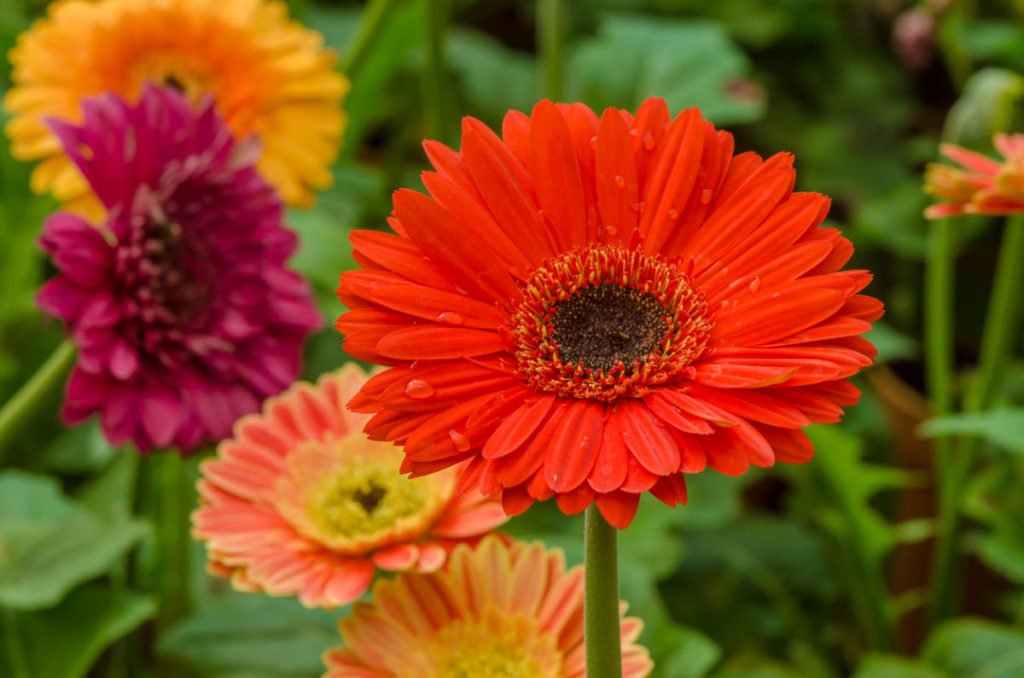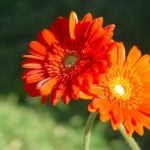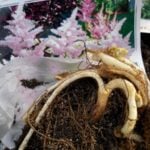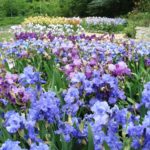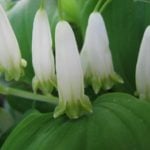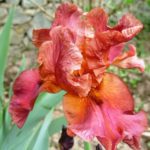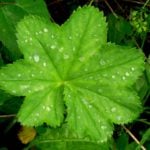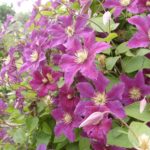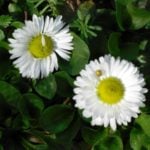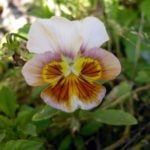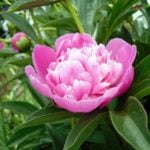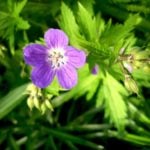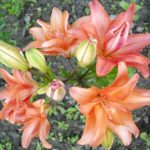In recent years, gerbera has become a very popular flower among amateur gardeners. Its flowers are colored in various shades of white, pink, yellow and red.
It is not so easy to grow gerbera in the garden. Difficulties will arise at the seed search stage. Apparently, the reason is that the vast majority of gerberas are grown in special nurseries in millions of lots for sale, pumped up with stimulants, after which this amazing flower lives for a very long time.
Landing and transplantation of gerbera
Seeds for seedlings are sown in January-March.
- The soil consists of a mixture of turf and leaf soil with the addition of humus (2:1:1) and sand.
- Seeds are buried to a depth of 0.2-0.3 cm (0.07-0.01 in). The first shoots appear in a couple of weeks.
- When 2-3 real leaves appear, the seedlings are dived into boxes, and with 4-5 leaves – in separate pots.
Gerbera blooms in 10-11 months from the moment of sowing. Plants obtained from seeds may lose the properties of the parent sample.

Transplanting is usually carried out in early spring.
The most popular method of reproduction is the division of the bush. This is especially true for valuable varieties. It is better to divide a 3-4-year-old bush.
Care of gerbera
The place for gerbera should be chosen so that it is well lit by the sun for a good half of the day. The soil for cultivation should be fertilized with inorganic fertilizers. Under such conditions, the flower stalks will not stretch and will retain their color and size, corresponding to a certain variety.

During the period of active growth, the grass is watered abundantly, after flowering-more than moderately, without allowing the roots to dry out. When watering, water should not fall on the leaves and drain into the outlet, provoking rot. Pour water at room temperature.
While gerbera grows and develops, it needs regular fertilizing with low-concentration mineral fertilizers. It is better to spend every two weeks until the fall. In autumn, fertilizing is reduced, and in winter it is completely stopped.
Types of gerbera
Gerbera viridifolia is native to South Africa.

It was she, along with gerbera Jamson, who became the ancestor of all modern varieties.

Diseases and pests of gerbera
Garden gerbera is very sensitive to various diseases and pests. Therefore, the soil must be treated before planting to avoid fungal diseases of the root system. The flowerbed with gerbera should not stagnate water.
- To prevent the appearance of gray rot, you can regularly treat with special drugs. You just need to make sure that the chemical does not get on the inflorescence.
- It is better not to cut the gerbera flowers, but to pull them out of the nest-if a piece of the flower stalk remains on the bush, this will cause the entire plant to rot.
- Treatment with insecticidal preparations will save the plant from pests.
